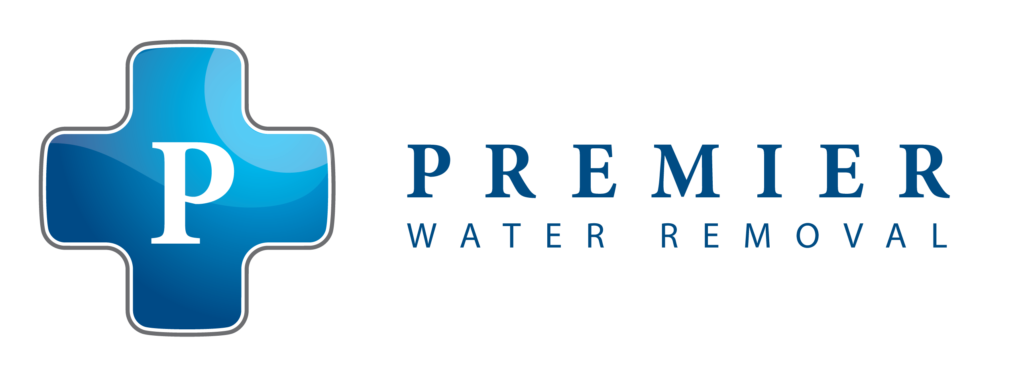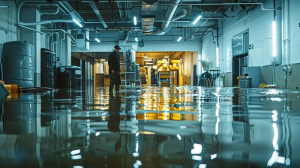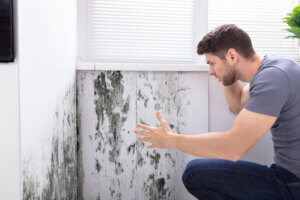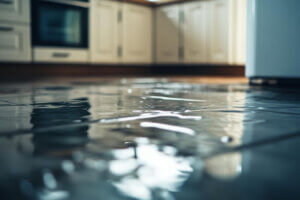Water damage can be a nightmare for any homeowner. Whether it’s from a burst pipe, a leaky roof, or a natural disaster, the effects can be devastating. Acting quickly and efficiently can make a huge difference in minimizing damage and preventing long-term issues. Knowing the best practices for water damage cleanup can help you stay prepared and take the necessary steps when disaster strikes.
The first moments after discovering water damage are crucial. Immediate action can prevent water from causing further destruction to your property and belongings. Identifying the source and stopping the flow of water is the top priority, followed by ensuring safety for everyone present.
Once you’ve taken initial steps to control the situation, it’s important to use the right tools and techniques for cleanup. From water extraction tools to dehumidifiers, having essential equipment on hand can make the process faster and more efficient. Proper cleaning and drying techniques help restore your home to its original condition and prevent potential health risks.
Mold growth is a common concern after water damage. Mold can develop rapidly in damp environments and pose serious health threats. Following best practices for preventing mold and long-term damage ensures that your home remains a safe and healthy place. By learning and implementing these strategies, you can effectively manage water damage cleanup and protect your home for the future.
Immediate Steps to Take When Water Damage Occurs
When water damage happens, quick action is essential. The first step is to find the source of the water and shut it off. This might mean turning off the main water valve or fixing a broken pipe. Stopping the flow of water prevents further damage.
Next, ensure everyone’s safety. Water and electricity don’t mix, so shut off the electricity in affected areas. If the damage is severe, it might be necessary to evacuate until it’s safe to return. Removing valuable items and furniture to a dry location can prevent further loss.
After securing the area, start removing standing water. Use buckets, mops, or towels to get rid of as much water as possible. If there’s extensive flooding, you might need specialized pumps or vacuums. Quick removal of water helps reduce the risk of long-term damage and mold growth.
Essential Tools and Equipment for Water Cleanup
Having the right tools and equipment makes water cleanup more efficient. A wet/dry vacuum is invaluable for removing standing water. These vacuums can handle large volumes of water and are versatile for different surfaces.
Dehumidifiers are crucial for drying out the air and preventing mold. They pull moisture from the air, speeding up the drying process. Fans and air movers also help by circulating air and drying wet areas faster.
For smaller jobs, simple tools like mops, buckets, and towels are essential. Heavy-duty gloves protect your hands from contaminated water, while waterproof boots keep your feet dry. If mold is already a concern, having a face mask can protect you from inhaling harmful spores.
Using the right tools ensures a thorough cleanup and helps restore your home to its original condition. Proper equipment not only speeds up the process but also helps prevent long-term damage.
Cleaning and Drying Techniques
Proper cleaning and drying techniques are crucial for effective water damage cleanup. Start by removing any wet materials, such as rugs, curtains, and furniture, to prevent further soaking. Washable items should be cleaned and dried as soon as possible.
Next, focus on drying out the affected areas. Use fans to circulate air and speed up the drying process. Position the fans to blow air towards open windows or doors to help remove moisture from the space. Dehumidifiers are also essential in this stage, as they extract moisture from the air and help prevent mold growth.
For soaked carpets and floors, specialized tools like carpet dryers or air movers can be very effective. These devices increase airflow and help dry surfaces thoroughly. It’s important to check under carpets and padding, as these areas can hold moisture and contribute to mold growth. Regularly monitor the drying progress and ensure that all damp areas are completely dry before moving on to further repairs or replacements.
Preventing Mold and Long-Term Damage
Preventing mold and long-term damage is key to keeping your home safe and healthy after water damage. Begin by thoroughly drying all affected areas within 24-48 hours to reduce the risk of mold growth. Mold can start to form quickly in damp environments, leading to health issues and further property damage.
Use anti-microbial sprays or cleaners to disinfect surfaces and prevent mold from developing. These products can kill mold spores and help stop the spread of fungi. Pay special attention to hidden areas like behind walls or under floors where mold might thrive unnoticed.
Regularly inspect your home for signs of mold, such as musty odors or discoloration on surfaces. If you discover mold, it’s important to remove it promptly using appropriate cleaning techniques or seeking professional help if the infestation is extensive. By staying vigilant and taking preventive measures, you can protect your home from the long-term effects of water damage and mold.
Conclusion
Water damage cleanup can seem overwhelming, but knowing the best practices can make the process easier and more effective. By taking immediate steps to control the situation, using the right tools and equipment, and implementing proper cleaning and drying techniques, you can restore your home and prevent long-term damage.
Regular maintenance and inspections are vital to catch potential problems early. Always keep an eye out for leaks, wear and tear on appliances, and signs of mold. Addressing these issues promptly can save you time, money, and stress in the long run.
If you’re facing water damage and need professional assistance, don’t hesitate to reach out. At Premier Emergency Water Removal, we specialize in fast and effective water damage restoration. Contact us today to ensure your home is treated with the care and expertise it needs to get back to a safe, dry state.



